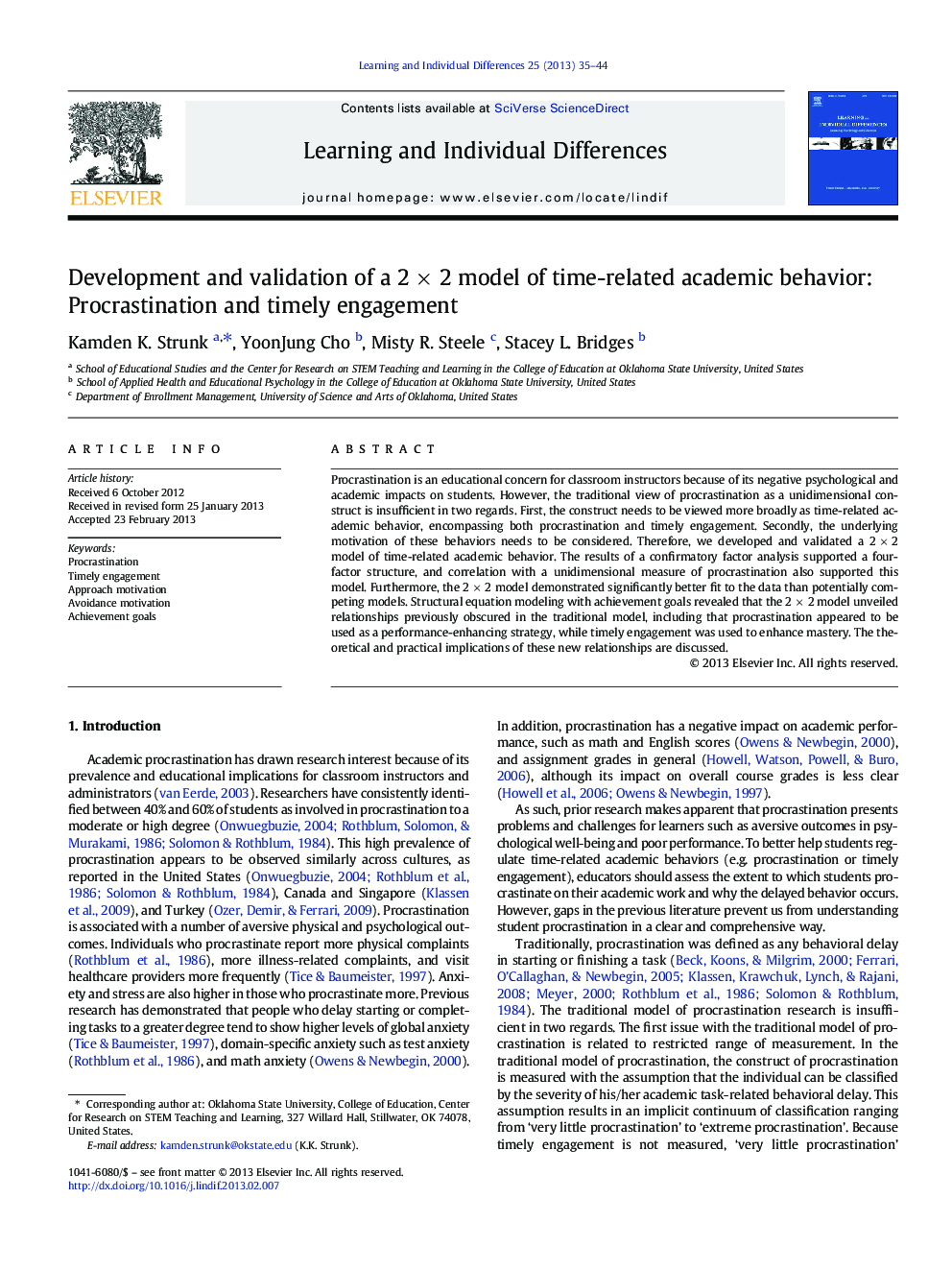| Article ID | Journal | Published Year | Pages | File Type |
|---|---|---|---|---|
| 365091 | Learning and Individual Differences | 2013 | 10 Pages |
•Develops a 2 × 2 model of time-related academic behavior•Utilizes approach and avoidance valence to understand motives for behavior•Tests the model using confirmatory factor analysis, which supports the structure•Finds support for the model using correlations with an existing measure•Finds new relationships with achievement goals and the 2 × 2 model.
Procrastination is an educational concern for classroom instructors because of its negative psychological and academic impacts on students. However, the traditional view of procrastination as a unidimensional construct is insufficient in two regards. First, the construct needs to be viewed more broadly as time-related academic behavior, encompassing both procrastination and timely engagement. Secondly, the underlying motivation of these behaviors needs to be considered. Therefore, we developed and validated a 2 × 2 model of time-related academic behavior. The results of a confirmatory factor analysis supported a four-factor structure, and correlation with a unidimensional measure of procrastination also supported this model. Furthermore, the 2 × 2 model demonstrated significantly better fit to the data than potentially competing models. Structural equation modeling with achievement goals revealed that the 2 × 2 model unveiled relationships previously obscured in the traditional model, including that procrastination appeared to be used as a performance-enhancing strategy, while timely engagement was used to enhance mastery. The theoretical and practical implications of these new relationships are discussed.
